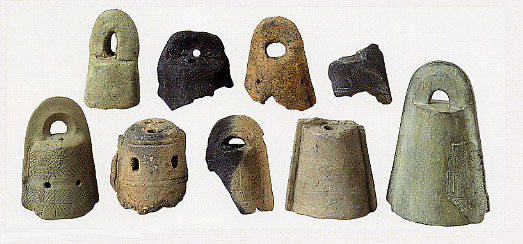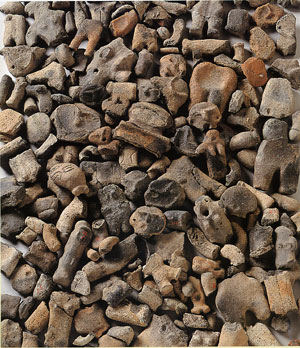
Wide flake blades made using the Setouchi technology, characterizes the Inland Sea region during the late Paleolithic period. At the foot of Mt.Nijo, numerous sites can be found where these blades were made. At these sites, many discarded flakes and backed blades broken during the process of manufacturing have been unearthed. This is the earliest evidence of human occupation in Nara Prefecture.
knife-shaped tools (kou-type)
from sites of the northern foot of Mt.Nijo


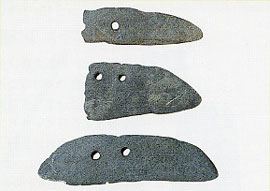
stone picker for harvesting rice
(Karako-Kagi site, Tawaramoto Town)
During this period, rice cultivation accompanied by other grains and beans was adopted from the Korean peninsula along with totally new social systems and technologies. Newly formed farming societies, which had become wealthier due to the introduction of wet rice cultivation, started to battle with each other in order to achieve more wealth and land which would yield them wealth. These frequent battles eventually led to the appearance of regional states led by local elite who gradually accumulated religious and political power.
jug
(Kazu site, Kashihara City)
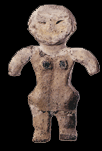
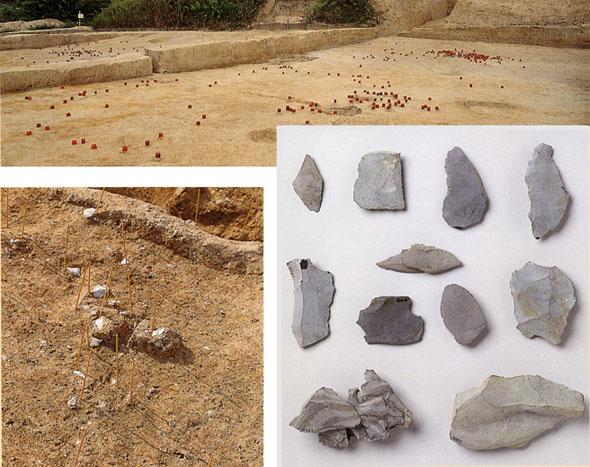
Jomon Period
(ca10,000--ca300BC)
Jomon potteries unearthed in Nara
Yayoi Period
(ca3rdC.BC--late 3rdC.AD)
latest Jomon
late Jomon
middle Jomon
kashihara site
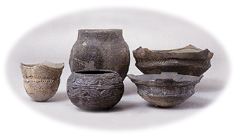
Hirose site, Yamazoe Vill.
Kitsui site, Kashiba
Ohko site, Yamazoe Vill.
Kiriyama-wada site, Yamazoe Vill.
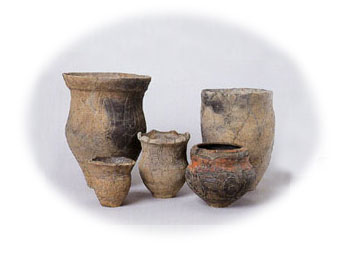
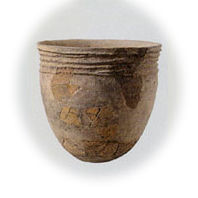
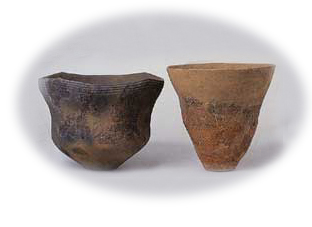
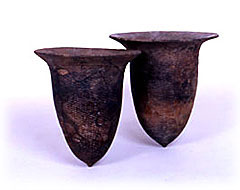
dotaku bell shaped clay objects
(from sites in Nara)
